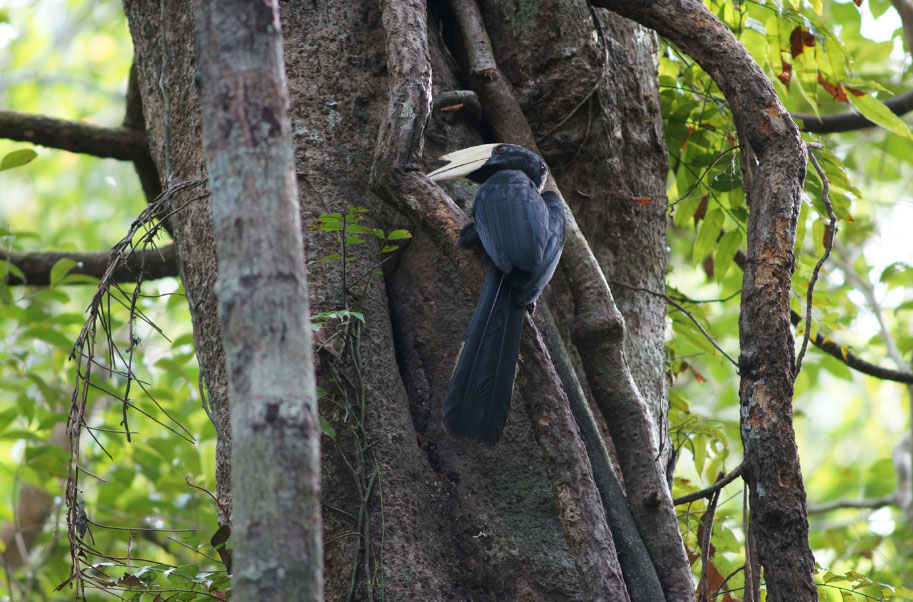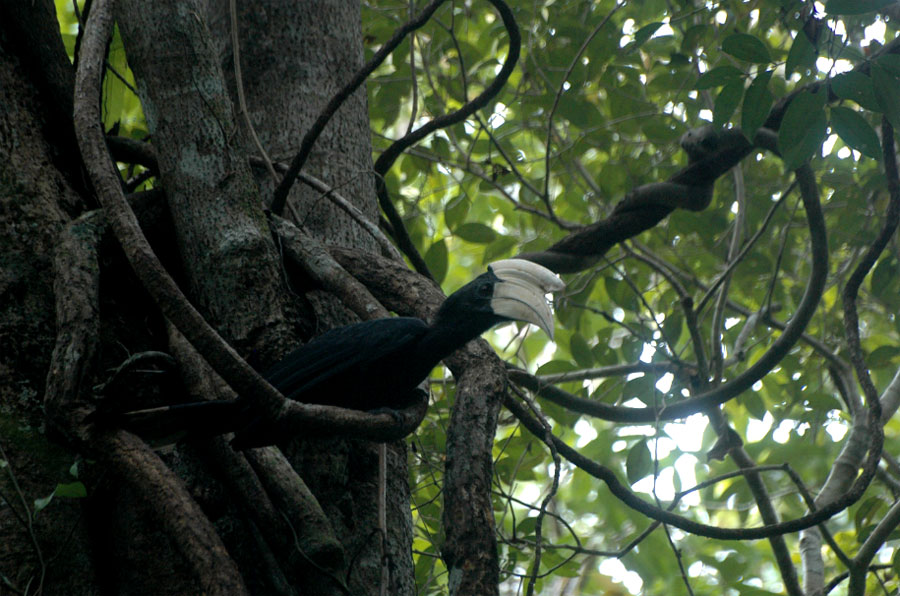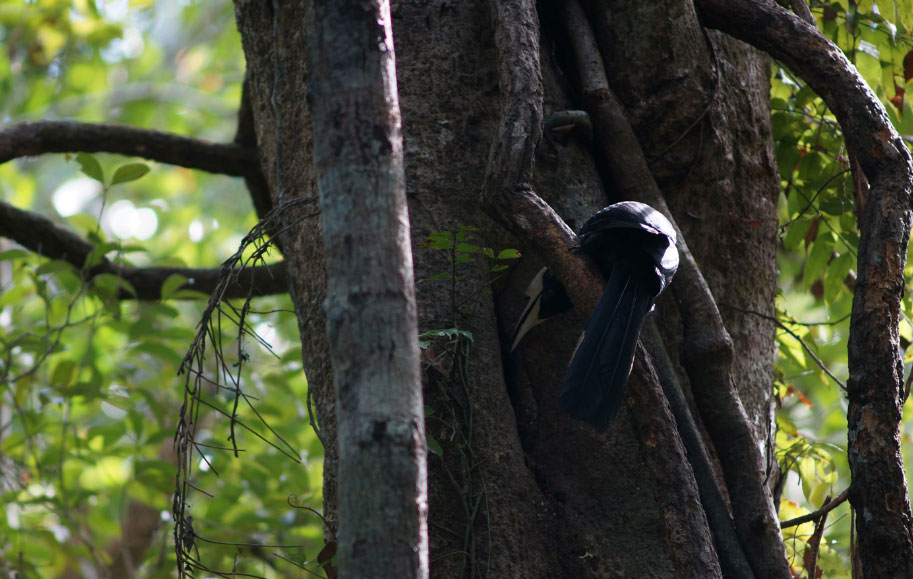Black Hornbill ( Anthracoceros malayanus )
Occurs in the Sunda subregion: from south Thailand into Peninsular Malaysia; Sumatra and Borneo.
Occurs in the Sunda subregion: from south Thailand into Peninsular Malaysia; Sumatra and Borneo.

Size 75-80 cm. Male 1050 g. Medium-sized hornbill differs from the sympatric Oriental Pied Hornbill by its entirely black underparts and lack of white trailing edge in wings visible during flight.
Outer tail feathers tipped white. Most (85%) of individuals have prominent white or pale grey superciliary stripe; the rest (15%) have dark grey hardly visible stripe.
Male has ivory bill with large casque and dark orbital skin female has black bill with small casque and pinkish orbital skin around brown eyes. Juvenile has smaller pale greenish bill without casque.
The voice is somewhat crow-like with loud harsh braying notes rising and falling in pitch.
Occurs in primary lowland rainforest, usually below 200m elevation, rarely up to 600m; frequently near water courses and often seen in alluvial flood plains and swamp forest; extends into mature secondary forest and forest edges nearby.
Where it overlaps with Oriental Pied Hornbill it can be found deeper within closed forest. It feeds mainly on larger lipid-rich fruits; it takes fewer figs, although 17 varieties have been identified.
In a peat swamp forest of southern Thailand, fruit food of Cryptocaya ferea (Lauraceae) , Aglaia rubiginosa ( Meliaceae) , Horsfieldia spp , Myristica spp (Myristicaceae) are recorded. Its fruit food recorded from Borneo is similar,Polyalthia (Annonaceae), Aglaia and Myristica.It also takes small animal food items including insects, skinks and bird eggs .It has been observed catching bats emerging from their cave at dusk and then feeding them to juveniles.
When in the forest, it feeds inside the canopy, often visiting fruiting trees at dawn. It will use its powerful bill to split husks and tear into bark. It appear to be sedentary and territorial usually a pair will be seen together, only rarely in flocks, then mainly of juveniles; up to 33 bird have been recorded together.


Not much is know. May not nest every year and timing is aseasonal; egg-laying recorded in Jan-Feb, Apr, Aug and Nov-Dec. In Thailand, a chick fledged from the nest in June. Two nests were in a natural cavity at about 10m above the ground of Ganua motleyana (Sapotaceae) trees, with DBH of 41-55 cm, in a peat swamp forest; possibly also in an abandoned woodpecker hole.
In captivity, 2-3 eggs were laid; incubation was about 30 days and up to two chicks may be raised. Male feeds female and later chicks at the nest; he is mainly quiet during this period. Nesting period is about 50 days; the adults will attend to the chicks for some time after fledging.